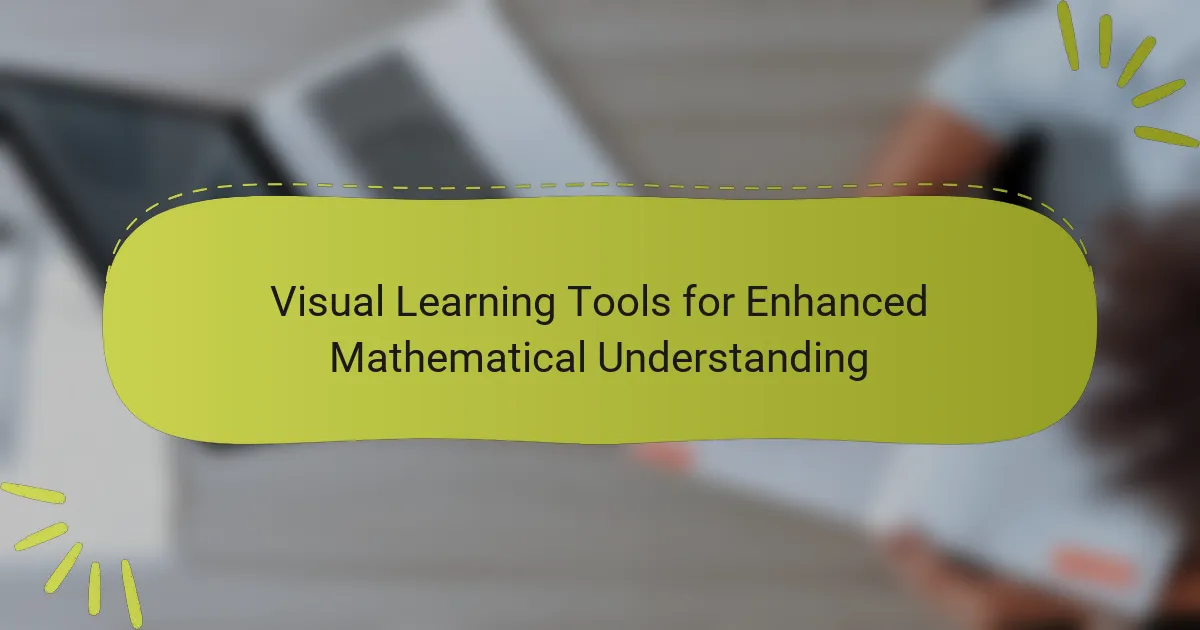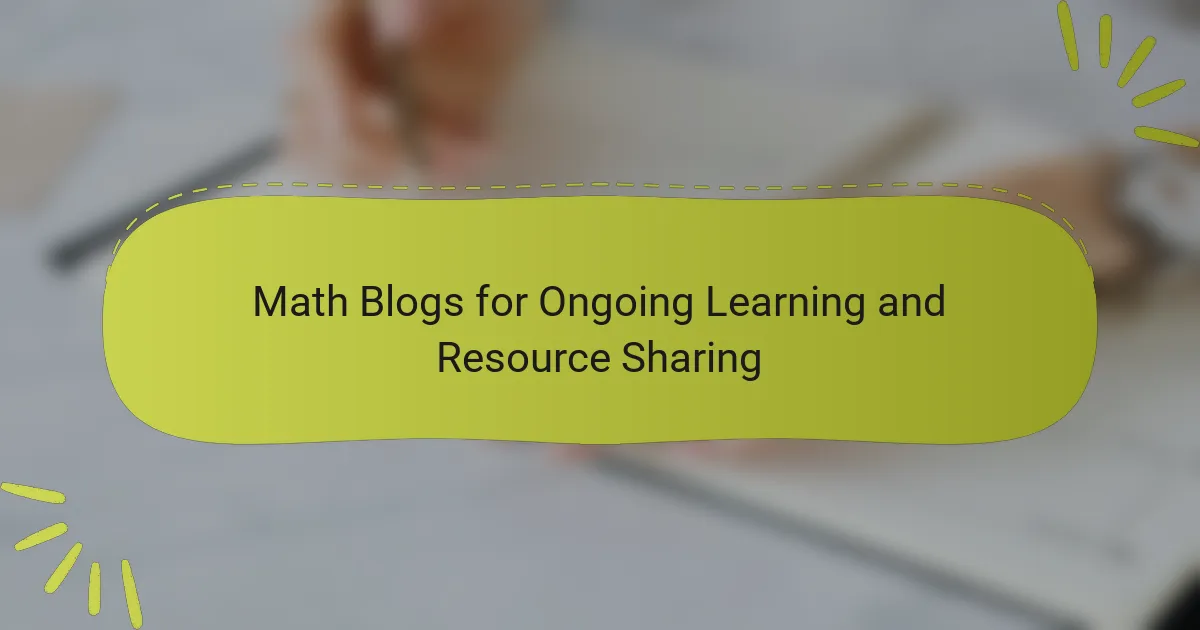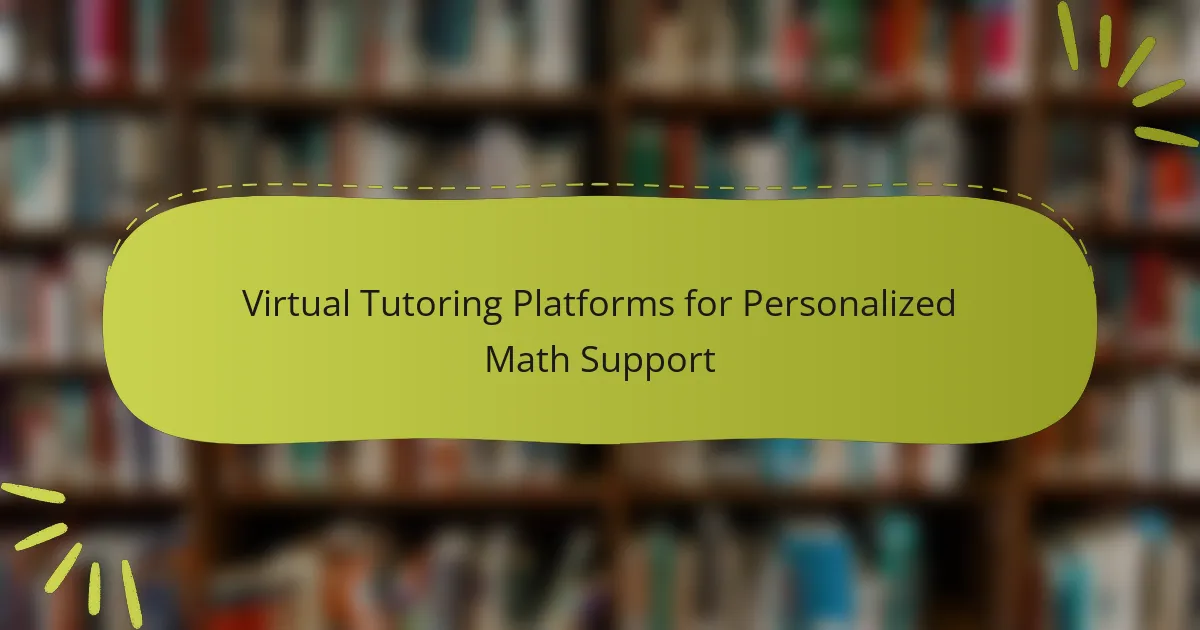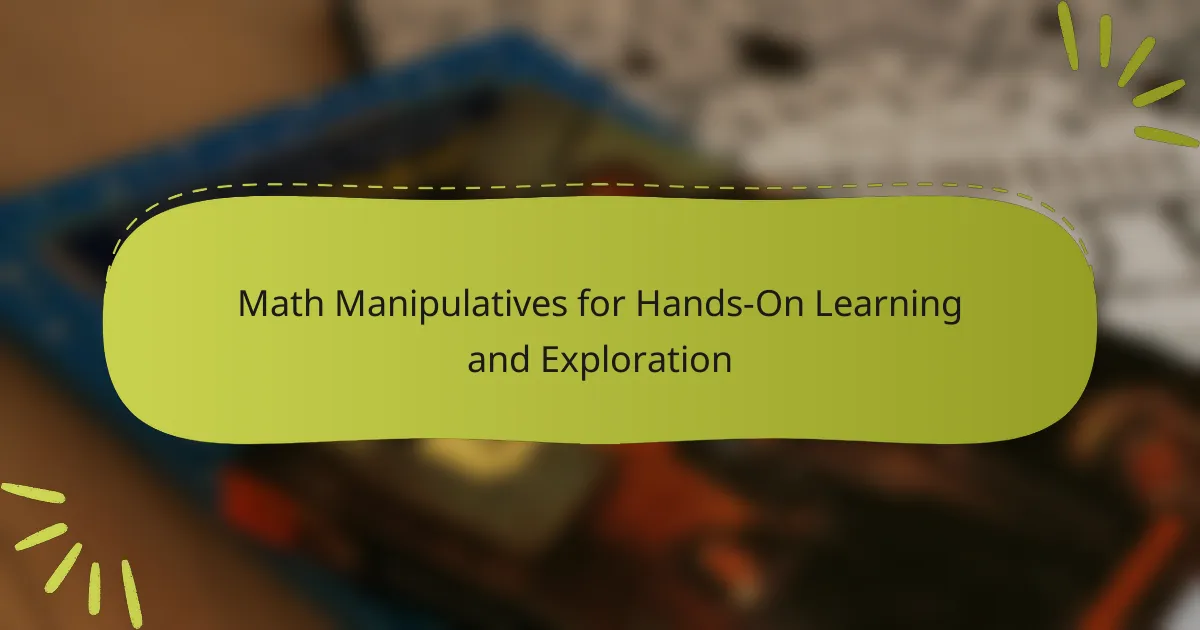Educational videos are visual learning tools designed to enhance understanding of mathematical concepts through animations, graphics, and real-life examples. These videos cater to diverse learning styles and aim to simplify complex ideas, thereby improving retention and comprehension in mathematics. Research has shown that students who utilize educational videos perform significantly better on assessments. The article explores various types of educational videos, including instructional, tutorial, conceptual, animated, review, and interactive formats, each serving specific educational purposes. Additionally, it discusses effective strategies for educators to integrate these videos into lesson plans to foster engagement and deepen understanding of challenging math topics.
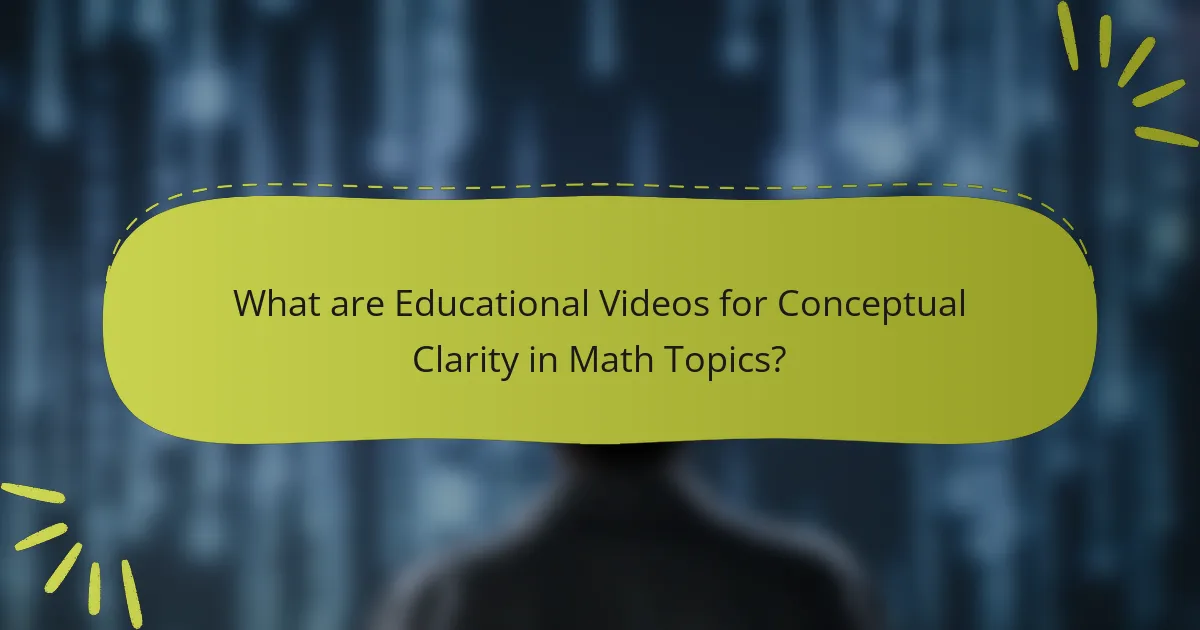
What are Educational Videos for Conceptual Clarity in Math Topics?
Educational videos for conceptual clarity in math topics are visual learning tools designed to enhance understanding of mathematical concepts. These videos utilize animations, graphics, and real-life examples to illustrate complex ideas. They aim to simplify abstract concepts, making them accessible to diverse learners. Research indicates that visual aids significantly improve retention and comprehension in mathematics. For instance, a study by the University of California found that students using educational videos scored 20% higher on math assessments compared to those who did not. These videos serve as supplementary resources, reinforcing classroom learning and providing alternative explanations. They cater to various learning styles, helping students grasp challenging topics effectively.
How do Educational Videos enhance understanding of mathematical concepts?
Educational videos enhance understanding of mathematical concepts by providing visual and auditory learning experiences. They illustrate complex ideas through animations and graphics. This multimedia approach caters to different learning styles. Research shows that students retain information better when it is presented visually. A study by Hattie (2009) highlights that visual aids can improve learning outcomes significantly. Educational videos also allow for self-paced learning. Students can pause and rewatch sections as needed. This flexibility supports mastery of challenging topics. Overall, educational videos make abstract concepts more accessible and engaging.
What specific math topics benefit from Educational Videos?
Algebra, geometry, calculus, statistics, and trigonometry are specific math topics that benefit from educational videos. Educational videos enhance understanding by providing visual representations of abstract concepts. For instance, algebraic equations can be illustrated through step-by-step video tutorials. Geometry concepts like shapes and theorems can be visually demonstrated, aiding in spatial understanding. Calculus topics, such as derivatives and integrals, are often better grasped with animated explanations. Statistics can be clarified through visual data representation in videos. Trigonometry, with its focus on angles and ratios, benefits from visual aids to illustrate concepts effectively. Research shows that students retain information better when engaging with visual content, making educational videos a valuable tool in these subjects.
How do different learning styles affect the effectiveness of Educational Videos?
Different learning styles significantly affect the effectiveness of educational videos. Visual learners benefit from graphics and animations that illustrate concepts. Auditory learners gain from explanations and discussions presented in the video. Kinesthetic learners may struggle with passive video consumption and require interactive elements. Research by Fleming and Mills (1992) identifies these learning styles, demonstrating varied engagement levels with video content. A study by Mayer (2001) shows that multimedia presentations enhance retention for visual and auditory learners. Therefore, tailoring educational videos to accommodate diverse learning styles can improve overall comprehension and retention in math topics.
Why are Educational Videos important for students learning math?
Educational videos are important for students learning math because they enhance understanding and engagement. Visual elements in videos help to explain complex concepts clearly. Research indicates that students retain information better when presented visually. A study by the University of California found that students who used educational videos scored 20% higher on math assessments. Videos also allow for self-paced learning, enabling students to revisit challenging topics. Interactive features in some videos can further reinforce learning. Overall, educational videos serve as effective tools in improving math comprehension.
What role do Educational Videos play in improving student engagement?
Educational videos significantly enhance student engagement by providing dynamic and interactive content. They cater to various learning styles, such as visual and auditory preferences. This multimedia approach makes complex concepts more accessible. Research shows that students retain information better when it is presented visually. According to a study by the University of California, students using educational videos scored 30% higher on assessments. Videos also encourage active participation through quizzes and discussions. This interactivity fosters a deeper understanding of the material. Overall, educational videos create a more stimulating learning environment that keeps students interested and motivated.
How can Educational Videos support diverse learning environments?
Educational videos can enhance diverse learning environments by catering to various learning styles. They provide visual and auditory stimuli, which can aid both visual and auditory learners. Videos can break down complex concepts into manageable segments, making them more accessible. This approach supports learners who may struggle with traditional teaching methods. Additionally, educational videos often include subtitles and graphics, which benefit learners with different language proficiencies. Research shows that students retain information better when engaging with multimedia content. A study by Mayer (2009) highlights the effectiveness of multimedia in improving understanding and retention. Thus, educational videos are a valuable tool for fostering inclusive learning experiences.
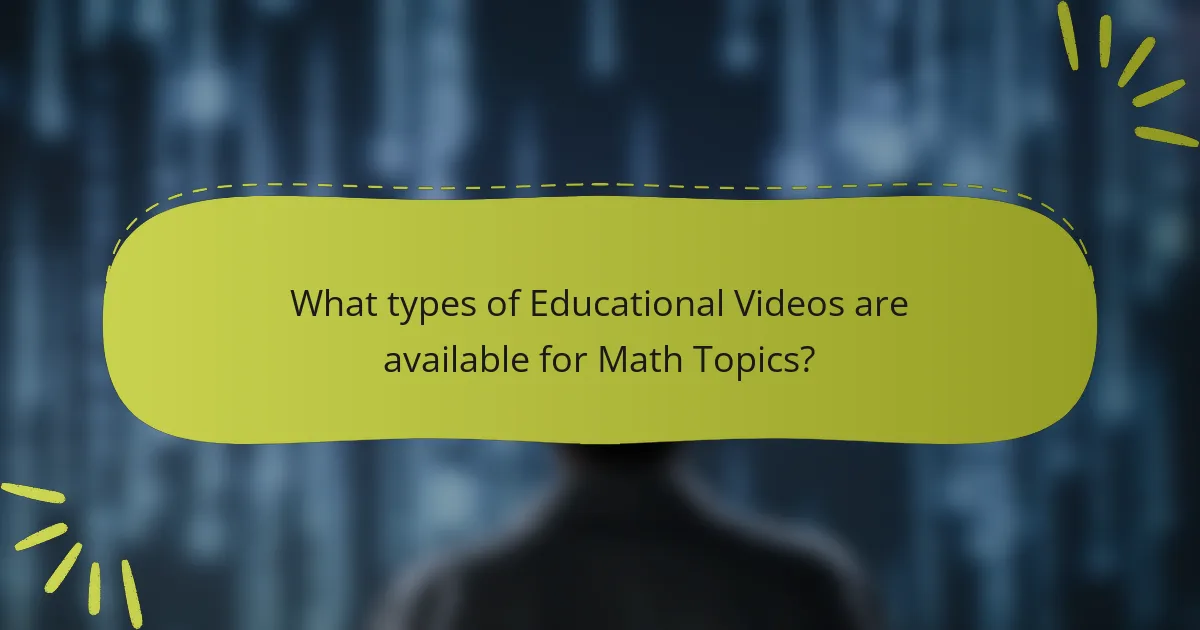
What types of Educational Videos are available for Math Topics?
There are several types of educational videos available for math topics. These include instructional videos, which explain mathematical concepts step-by-step. Tutorial videos offer practical examples and problem-solving techniques. Conceptual videos focus on underlying theories and principles of mathematics. Animated videos visualize complex ideas, making them easier to understand. Review videos summarize key topics for quick revision. Additionally, interactive videos allow viewers to engage with the material through quizzes and activities. Each type serves a unique purpose in enhancing understanding of math concepts.
How can animated videos aid in explaining complex math concepts?
Animated videos can effectively aid in explaining complex math concepts by visualizing abstract ideas. They transform intricate mathematical theories into engaging visual representations. This approach helps learners grasp difficult topics more easily. Animated videos can break down concepts into step-by-step processes. They often use relatable examples to enhance understanding. Research indicates that visual learning can improve retention rates. A study by Mayer (2009) found that students learn better from words and pictures than from words alone. Animated videos cater to different learning styles, making them versatile educational tools.
What are the advantages of using live-action videos for math education?
Live-action videos enhance math education by providing visual context and relatable scenarios. They engage students through dynamic storytelling and real-world applications. This format addresses diverse learning styles, catering to visual and auditory learners. Research shows that students retain information better when concepts are presented visually. Live-action videos can simplify complex ideas by demonstrating them in action. They also promote critical thinking by presenting problem-solving in relatable situations. Additionally, these videos can create a more immersive learning experience, fostering a deeper understanding of mathematical concepts.
How do interactive videos enhance student participation in math learning?
Interactive videos enhance student participation in math learning by engaging students actively in the learning process. These videos incorporate features like quizzes, polls, and clickable elements. Such interactivity encourages students to respond and interact rather than passively consume content. Research shows that active participation improves retention and understanding of mathematical concepts. For instance, a study by Hattie (2012) indicates that interactive learning environments can increase student achievement by up to 30%. Furthermore, interactive videos allow for immediate feedback, helping students correct misunderstandings promptly. This combination of engagement and instant feedback fosters a more dynamic learning experience in mathematics.
What platforms provide access to Educational Videos for math learning?
Khan Academy, YouTube, Coursera, and edX provide access to educational videos for math learning. Khan Academy offers a wide range of math topics with instructional videos and practice exercises. YouTube hosts numerous educational channels like Math Antics and Numberphile that focus on math concepts. Coursera partners with universities to offer courses that include video lectures on mathematics. edX provides similar university-level courses with video content focused on various math disciplines. These platforms are widely recognized for their educational resources and accessibility.
Which online resources are most effective for finding math Educational Videos?
YouTube is one of the most effective online resources for finding math educational videos. It offers a vast range of content covering various math topics. Channels like Khan Academy and Numberphile provide high-quality instructional videos. These channels have millions of subscribers and extensive playlists. Another effective resource is Coursera, which offers structured courses with video lectures. Websites like EdX also feature math courses from reputable universities. Additionally, platforms like Mathway provide video solutions to specific math problems. These resources are widely used by students and educators for their accessibility and variety.
How can educators utilize social media for sharing Educational Videos?
Educators can utilize social media platforms to share educational videos effectively. They can create dedicated channels on platforms like YouTube or Facebook. These channels can host a variety of math-related content. Educators should engage their audience by posting regularly and responding to comments. Sharing videos in relevant groups can increase visibility and reach. Hashtags can help categorize content for better discoverability. Collaborating with other educators can also expand their audience. According to a study by the Pew Research Center, 73% of adults use social media, making it a valuable tool for reaching learners.
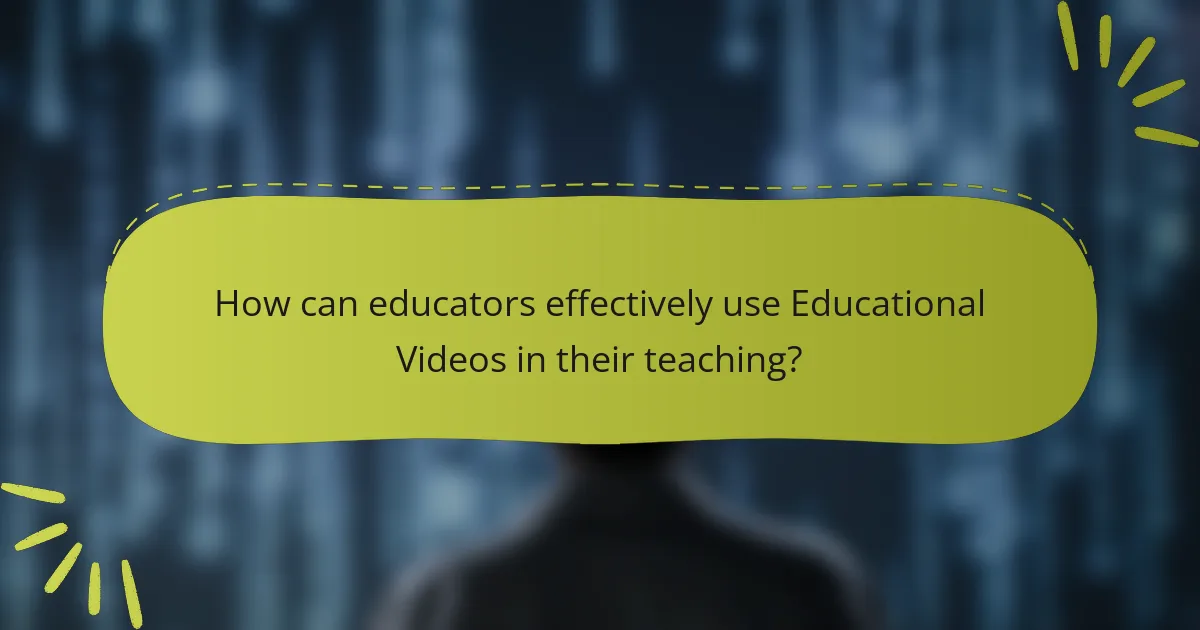
How can educators effectively use Educational Videos in their teaching?
Educators can effectively use educational videos by integrating them into lesson plans. Videos should align with specific learning objectives. They can illustrate complex math concepts visually, enhancing understanding. Additionally, educators can pause videos at key moments to facilitate discussion. This encourages student engagement and critical thinking. Providing guided questions related to the video content can deepen comprehension. Research shows that multimedia learning can improve retention rates by up to 60%. By using videos, educators create a dynamic learning environment that caters to various learning styles.
What strategies can educators implement to integrate Educational Videos into lessons?
Educators can implement several strategies to integrate educational videos into lessons. First, they can align video content with specific learning objectives. This ensures that the videos serve a clear educational purpose. Second, educators can use videos as a starting point for discussions. This encourages student engagement and critical thinking. Third, they can pause videos at key moments to facilitate questions and reflections. This technique promotes deeper understanding. Fourth, educators can incorporate video summaries to reinforce concepts after viewing. This helps in retention of information. Fifth, they can assign videos as homework to prepare students for upcoming lessons. This approach provides students with foundational knowledge. Sixth, educators can encourage collaborative viewing, where students watch videos in groups. This fosters peer discussion and teamwork. Lastly, they can utilize video quizzes or interactive elements to assess comprehension. This provides immediate feedback on student understanding.
How can educators assess the impact of Educational Videos on student learning?
Educators can assess the impact of educational videos on student learning through various methods. One effective approach is pre-and post-assessments. This involves testing students before and after they view the videos. Comparing these results can show knowledge gains attributed to the videos.
Another method is student feedback surveys. These surveys can gauge students’ engagement and understanding after watching the videos. Analyzing this feedback helps educators understand the videos’ effectiveness.
Observational studies in the classroom can also provide insights. Educators can observe student interactions and participation during video lessons. This qualitative data can reveal how videos influence learning dynamics.
Additionally, tracking academic performance over time can be useful. If students demonstrate improved grades in math topics after video exposure, it indicates a positive impact.
Research supports these assessment methods. A study by Hattie (2009) emphasizes the importance of feedback and assessment in learning. This reinforces that systematic evaluation of educational videos can yield significant insights into their effectiveness.
What challenges might educators face when using Educational Videos?
Educators may face several challenges when using educational videos. One challenge is ensuring that the video content aligns with curriculum standards. Misalignment can lead to confusion among students. Another challenge is managing students’ attention spans. Research shows that attention can wane quickly, especially with longer videos. Additionally, technical issues may arise, such as poor internet connectivity or software malfunctions. These issues can disrupt the flow of the lesson. Furthermore, educators must consider varying learning styles. Not all students absorb information through video formats. Lastly, there may be a lack of resources for creating or sourcing high-quality videos. This scarcity can limit the effectiveness of video-based instruction.
How can technical issues be resolved to ensure smooth video playback?
To resolve technical issues for smooth video playback, ensure a stable internet connection. A wired connection is preferable over Wi-Fi for better stability. Check the device’s compatibility with the video format being used. Update the video player software to the latest version for optimal performance. Clear the browser cache if streaming online to remove any corrupted data. Reduce the video quality settings if the connection is slow. Close unnecessary applications running in the background to free up system resources. Restart the device to reset any temporary glitches affecting playback. These steps can significantly enhance the video playback experience.
What methods can be used to keep students focused while watching Educational Videos?
To keep students focused while watching educational videos, interactive elements can be incorporated. These include quizzes and polls that engage students actively. Regular breaks can also help maintain attention. Research shows that short videos, ideally under 10 minutes, improve retention and focus. Visual aids, such as diagrams and animations, can enhance understanding and interest. Clear objectives at the beginning of the video guide students on what to focus on. Additionally, encouraging note-taking during the video can reinforce learning. Finally, providing a discussion platform post-viewing allows students to reflect and engage further with the material.
What best practices should be followed when creating or selecting Educational Videos?
When creating or selecting educational videos, prioritize clarity and engagement. Use clear visuals to illustrate complex concepts. Ensure the audio quality is high for effective communication. Keep videos concise to maintain viewer attention. Incorporate interactive elements, such as quizzes, to enhance learning. Align content with educational standards to ensure relevance. Research shows that shorter videos improve retention rates. According to a study by the University of California, students retain 60% more information from videos under 10 minutes.
Educational videos for conceptual clarity in math topics are visual learning tools designed to enhance understanding of mathematical concepts through animations, graphics, and real-life examples. These videos cater to various learning styles, providing an engaging and effective method for students to grasp complex ideas in subjects such as algebra, geometry, calculus, statistics, and trigonometry. Research indicates that educational videos significantly improve retention and comprehension, making them valuable resources for reinforcing classroom learning and accommodating diverse learning environments. The article explores the types of educational videos available, their impact on student engagement, and strategies for educators to effectively integrate them into teaching.
